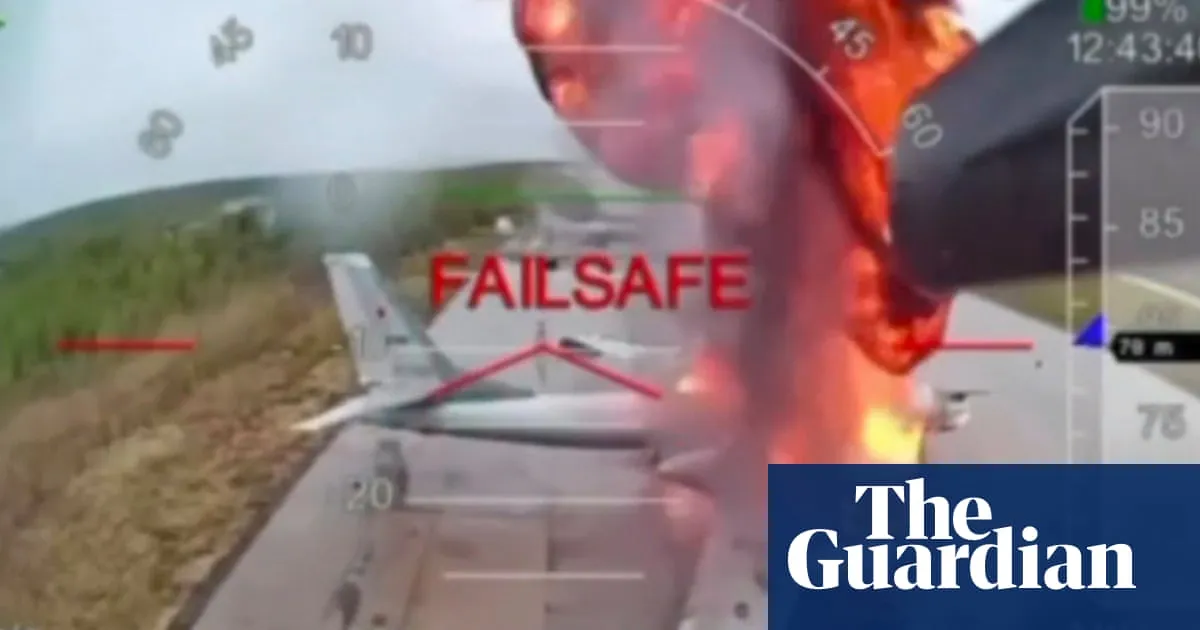
A recent Ukrainian drone attack has led to the destruction of billions of dollars worth of Russian aircraft located at military bases across the country, with operations extending as far as Siberia. This assault, described by Kyiv as its longest-range operation of the ongoing conflict, was part of a meticulously planned initiative named Spiderweb, which took over 18 months to prepare.
The operation involved the clandestine movement of short-range drones and explosives into Russian territory. These drones were strategically hidden inside containers, which were then transported by trucks to positions near Russian military bases. According to Vasyl Maliuk, the head of the Security Service of Ukraine (SBU), the containers were designed to resemble ordinary wooden sheds, allowing for covert deployment.
Once the trucks reached their designated locations, a remotely activated mechanism allowed the roofs of the containers to retract, enabling the drones to take flight and initiate their assault. The drones utilized first-person view (FPV) technology, facilitating remote operation, likely from within Ukrainian territory. Launching the drones from Ukraine directly would have posed significant challenges, given the vast distances and the need to navigate Russian air defenses.
Images released by Ukrainian security officials depicted the containers with drones concealed among structural beams. Social media footage from Russian sources appeared to confirm the dramatic launch of the drones from these hidden containers. The SBU reported that the drone strikes successfully damaged a total of 41 aircraft, although the complete extent of the damage is still being assessed.
Among the aircraft reportedly targeted were A-50 surveillance planes and supersonic bombers, including the Tu-160 and Tu-22, as well as the formidable Tu-95 bombers, which are capable of carrying nuclear payloads and launching cruise missiles. The SBU estimated that the total value of the damaged aircraft amounted to approximately $7 billion (£5.2 billion) across four airbases.
The drone strikes successfully targeted several key locations, including the Belaya airbase in Irkutsk, which is located over 2,500 miles (4,000 km) from Ukraine. Additional targets included the Olenya airbase in Murmansk, Dyagilevo airbase in Ryazan, and Ivanovo Severny airbase in Ivanovo. In response, the Russian defense ministry acknowledged that several military aircraft had “caught fire” as a result of the attack in both Murmansk and Irkutsk, although they reported no casualties and indicated that several "participants" involved had been arrested.
Since the beginning of the full-scale invasion in February 2022, Ukraine has faced significant challenges in terms of military capabilities compared to Russia. However, Ukraine has innovatively adapted by developing a large and cost-effective fleet of attack drones. President Volodymyr Zelenskyy stated that a total of 117 drones were deployed in this operation, with an equal number of drone operators actively involved.
Zelenskyy claimed that approximately 34% of the “strategic cruise missile carriers” stationed at the targeted airbases were successfully struck. He emphasized the complexity of the operation, noting that Ukrainian operatives worked across several Russian regions spanning three different time zones. Furthermore, he revealed that individuals who assisted in the operation were safely extracted from Russian territory prior to the attack, although he did not specify whether these operatives were Ukrainian or Russian.
This unprecedented drone strike marks a significant escalation in the ongoing conflict and highlights Ukraine's evolving military strategy in the face of overwhelming odds.